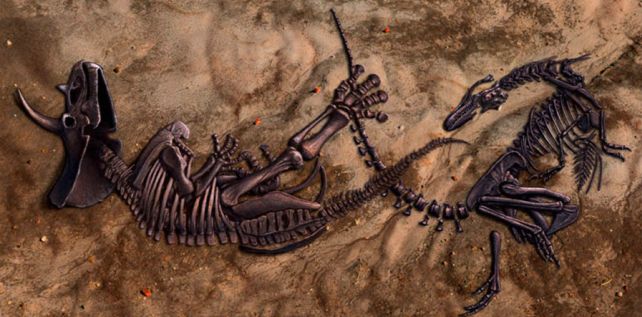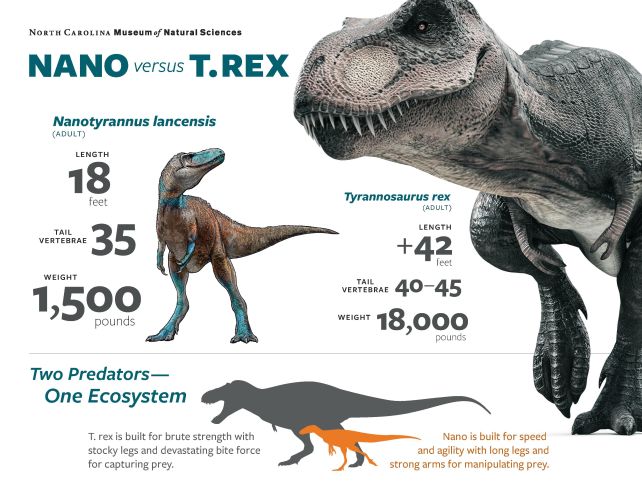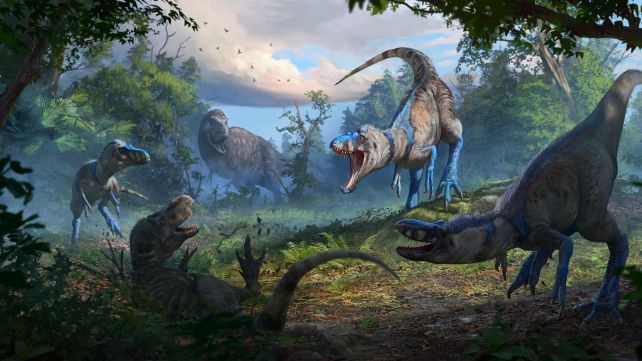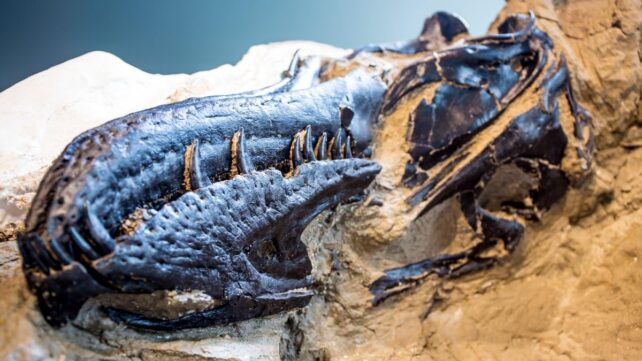Fossilized predator bones found in the legendary Cretaceous dinosaur graveyard of Hell Creek did not belong to a baby Tyrannosaurus rex after all.
Analysis of the remains – an almost complete skeleton that forms half of the famous Triceratops-tyrannosaur battle fossil known as Dueling Dinosaurs – shows they belonged to a diminutive tyrannosaurid predator that would have grown to less than a tenth of the size of its more intimidating cousins.
Nanotyrannus lancensis, at around the weight of a polar bear, was a veritable teacup version of the larger tyrannosaurs, built for agility and speed rather than sheer crushing power.
Related: Stunningly Complete Dome-Headed Dinosaur Emerges From The Sands of Mongolia

The Nanotyrannus genus has been debated for decades, with some paleontologists arguing that specimens thus classified are instead juvenile T. rex. This almost-complete skeleton puts the controversy to bed, according to a team led by paleontologist Lindsay Zanno of North Carolina State University.
"This fossil doesn't just settle the debate. It flips decades of T. rex research on its head," Zanno says.

To resolve the identity crisis of the Dueling Dinosaurs tyrannosaurid, Zanno and her colleague, paleontologist James Napoli of the North Carolina Museum of Natural Sciences, conducted a detailed, systematic anatomical survey of the specimen. They paid careful attention to features such as growth rings, spinal fusion data, and developmental anatomy to estimate the animal's maturity at the time of death.
Their analysis showed that the specimen was fully grown and would have weighed about 680 kilograms (1,500 pounds). A fully grown T. rex is estimated to reach about 8,000 kilograms on average, although the biggest known has a heavier estimate – and they could have grown much larger.
In addition, N. lancensis has several features and structures that in no way could develop into the morphology of a T. rex skeleton, the researchers say.

"For Nanotyrannus to be a juvenile T. rex, it would need to defy everything we know about vertebrate growth," Napoli says. "It's not just unlikely – it's impossible."
Because their research required comparing Dueling Dinosaurs with other fossils, the researchers studied more than 200 tyrannosaur fossils. This meant they were also able to identify one other specimen that matches the profile of N. lancensis.

Zanno and Napoli also found another specimen long considered a juvenile T. rex whose features place it closer to N. lancensis. It's not an exact match, but a distinct species that they named Nanotyrannus lethaeus, after the river Lethe in the Greek underworld.
This is quite exciting. For years, paleontologists have used the Nanotyrannus fossils to understand juvenile T. rex development. Identifying them as a distinct species means scientists can now build a more accurate picture of how T. rex changes as it grows up.
It also means a better understanding of the rich and complex ecosystems in which these animals thrived.
"This discovery paints a richer, more competitive picture of the last days of the dinosaurs," Zanno says. "With enormous size, a powerful bite force, and stereoscopic vision, T. rex was a formidable predator, but it did not reign uncontested. Darting alongside was Nanotyrannus – a leaner, swifter, and more agile hunter."
The research has been published in Nature.

